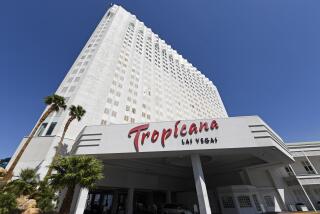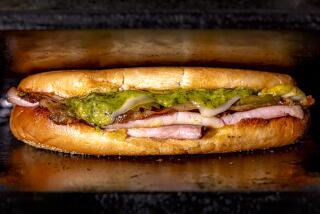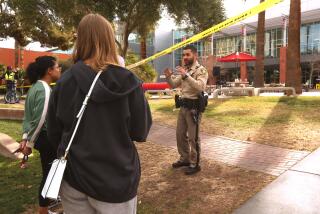Historic Old West buildings are Las Vegas, N.M.’s jewels
When you think of Las Vegas, you probably don’t think of Las Vegas, N.M. It’s the other Las Vegas, and perhaps the wildest Wild West town you’ve never heard of.
I had never heard of Las Vegas, N.M., when I first encountered it in 1997 — a Western boomtown, frozen in time, with eye-popping architecture and more than 900 buildings on the state and National Register of Historic Places.
I returned again in the fall of 2010 on my honeymoon, remarried after being single nearly 30 years. The city was just as I had remembered it, gracefully aging in the high mountain meadows of northern New Mexico.
But since my last visit, a community of artists (at last count, 168) has taken root in the city and in surrounding San Miguel County, establishing Las Vegas as one point on a vibrant artistic triangle that encompasses nearby Santa Fe and Taos. A new website, https://www.lasvegasnewmexicoarts.com, offers information on local artists and the region’s ambitious cultural plans.
Driven by civic pride and the hopes of an improved economy, this Las Vegas also has embarked on an unprecedented effort to reclaim and preserve its architectural heritage. I could hardly walk anywhere in town without encountering a historic building or home, or a local resident who wanted to tell me about one.
Old-fashioned shootouts
Today, a visitor can stroll through a mile-square Arts & Culture District awash in Spanish, Victorian and Territorial architecture. Building styles span the 1840s, when Las Vegas was a busy stop for wagon trains on the Santa Fe Trail, its Wild West days — “Doc” Holliday had a saloon here and shootouts occurred regularly — and its boomtown era sparked by the arrival of the Atchison Topeka & Santa Fe Railway in 1879.
“At one time, there was an expectation that Las Vegas would be the biggest city in the Southwest — then it just stopped, and nothing much has been built since then,” said Doyle Daves, a member of the Las Vegas Citizens Committee for Historic Preservation.
Daves is a former dean of science at Rensselaer Polytechnic Institute in Troy, N.Y., and a New Mexico native who settled in Las Vegas after he retired. The city’s buildings survived, he said, because drought and the Great Depression choked off plans for large-scale development projects, as did the closing of the railway headquarters in the late 1950s.
The art in Las Vegas is just as varied as the architecture, ranging from traditional carved wooden saints to softly painted retablos (devotional paintings) to native jewelry and eclectic contemporary works.
Jewelry was on my mind when I stopped at Tito’s Gallery on historic Bridge Street and ordered two handmade wedding rings from the shop’s proprietor, Jose E. Tito Chavez.
Like many craftsmen and artists, Chavez has deep roots in the community. His great-great grandfather, Miguel Romero, was a city founder and helped lead its early development.
Today, Chavez lives in an 1870s adobe house that belonged to his great-grandmother, the same house that famed African American fighter Jack Johnson rented in the summer of 1912 when he came to Las Vegas to defend his heavyweight boxing title against Jim Flynn, whom he easily defeated.
Chavez’s shop also is home to works by many of the region’s santeros –- native artists who translate their vision of the divine into paintings, intricate carvings and a variety of other mediums. Eyes of the saints stare at you from seemingly every wall.
Peaks here, plains there
Las Vegas is nestled between two vastly different geographic features, the Sangre de Cristo Mountains — the start of the Rockies — on one side and the Great Plains on the other. Nearby are state parks and the 1.6-million acre Santa Fe National Forest, where recreational possibilities include camping and fishing, as well as trails for hiking, mountain biking and horseback riding. The Las Vegas National Wildlife Refuge, home to thousands of birds that winter or rest here, is an ideal venue for birders.
The peaks and plains surrounding Las Vegas, along with the town’s picturesque buildings, have provided the setting for scores of movies such as “Easy Rider” (1969), “Red Dawn” (1984) and “No Country for Old Men” (2007). Most recently, parts of “True Grit” were filmed on a ranch outside Las Vegas.
Perhaps the most prominent reminder of movie making in Las Vegas is the mural of an outsized cowgirl on a downtown building with the inscription, “Calumet says Howdy.” The mural was painted for “Red Dawn,” starring the late Patrick Swayze. Calumet was the name of the fictional Colorado town invaded by the Soviet Union and its Latin America allies before being repelled by local teenagers.
For fans of real-life history, the city museum houses the Rough Rider Memorial Collection, perhaps because nearly a third of the Rough Riders were recruited from New Mexico. Col. Theodore Roosevelt attended the first reunion of the Rough Riders in the summer of 1899, and the veterans continued to meet in Las Vegas until the early 1970s.
Keep it quirky
Cindy Collins, executive director of Main Street Las Vegas, said one of the city’s biggest challenges is trying to make itself more visible to those who have an interest in seeing its remarkable architectural and reliving its quirky history.
Some of the “quirky” aspects of Las Vegas will be encouraged to remain quirky, Collins said. She pointed to Estella’s Cafe on Bridge Street, a hometown favorite that looks much as it did 50 years ago, with pressed-tin ceilings and a row of round bar stools covered in red vinyl.
Don’t look for Wi-Fi, and Estella’s doesn’t take credit cards. But if you yearn for a place so laid back that you think the clocks have stopped, join the locals at Estella’s.
The green chile stew is made fresh and served hot. Have plenty of cold water on hand; I finished my first glass after three spoonfuls.
Down the street from Estella’s is Popular Dry Goods, a western-wear store that caters to ranch families and real cowboys. Merchandise is stacked on every inch of floor space, and customers didn’t seem to mind threading through narrow aisles to find what they wanted. One customer told me that if the store didn’t have it, I probably didn’t need it.
Contemplative types might want to drop in at Tome on the Range, a local bookstore on Bridge Street that specializes in local and regional authors. Owner Nancy Colalillo has bought and restored three buildings on the street.
While we were in town, my wife, Penelope, and I stayed in the circa 1882 Plaza Hotel, which was renovated in the 1980s. William “Wid” Slick, a transplanted Texan and the hotel’s owner, recently expanded and updated the property by incorporating an historic building next door, which produced a ballroom and more than 30 additional guest rooms. One day, he foresees a flow of tourists and retirees into the city — not because it looks like that other Las Vegas, but because it doesn’t.
As Las Vegas faded into a nearly perfect sunset on our way home, we vowed to return to see the boomtown’s progress in preserving its historical treasures — and, of course, to have another serving of green chile stew at Estella’s.
.
More to Read
Sign up for The Wild
We’ll help you find the best places to hike, bike and run, as well as the perfect silent spots for meditation and yoga.
You may occasionally receive promotional content from the Los Angeles Times.






